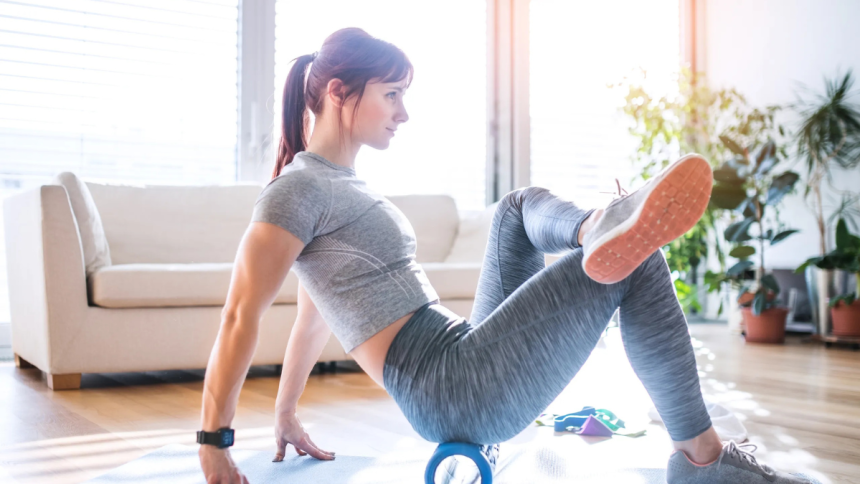So, here’s the scenario: you tie your shoes, get out on your run, and keep going until your breathing and footsteps dominate the universe. Feeling powerful is how you feel. At no cost and quickly.
The next day, you become acutely aware of your hamstrings, quadriceps, and tight calves, as if someone had pulled them too tightly.
Does this ring a bell?
No matter how often you hit the pavement, whether it’s just for fun like playing on a billiard table or as part of your training for a marathon, you should always have the foam roller on hand.
It could appear to be a harmless cylinder of foam…
However, for runners, it’s like having an invisible weapon that you’ve been underutilizing.
Let’s Be Real: What Is Foam Rolling Anyway?
How about in layman’s words?
It’s like giving yourself a deep tissue massage—anywhere, anytime.
When you roll out on a textured surface using your body weight, you can put pressure on sore muscles, which helps release tension, improve circulation, and speed up the recovery process.
Compare it like pressing the “reset” button on your legs.
Why Runners Ought to Be Rolling (Devoutly)
1. Avoid Injuries Before They Occur
Ankle sprains? Feeling cramped while playing with different sports goods? They are frequently the cause of typical running injuries such as hip pain, runner’s knee, and shin splints.
Foam rolling on a regular basis helps to maintain healthy fascia, loose muscles, and prevents tension from impeding your progress.
2. Active Recovery
That muscle ache you get after a run, the one you’ve learned to embrace as “part of the process”? It doesn’t have to be that way.
After a run, roll out your quads, hamstrings, glutes, and calves for ten to fifteen minutes to reduce soreness, increase blood flow, and alleviate post-run muscular stiffness.
3. Achieve Better Performance, Move With Ease
A more relaxed body allows for more efficient movement, longer strides, and improved form. When you foam roll, you’re not just recovering; you’re fueling performance.
Looking to go for a new personal best? Take the lead with the roll.
Mastering the Art of Scream-Free Rolling
To be quite honest, foam rolling isn’t always fun. However, the “hurts-so-good” sort. And that’s the sole reason: it’s producing some results.
To finish what you start without giving up, follow these steps:
Take It Easy At First: Don’t rush in. Take your time and gradually increase the pressure as you ease into each movement.
Target Your Main Running Muscles: Slightly stretch the hip flexors, hamstrings, calves, glutes, lower back, and IT band.
Breathe: Tension increases when you hold your breath. Took a deep breath and let it go.
Roll For No More Than 1-2 Minutes Per Area: In some cases, less is more.
Keep At It: Just like with running, consistency is key to seeing benefits.
Common Errors Made by Runners When Using Foam Rollers
– Going at a high speed. The (sore) race is won by a steady hand.
– Rolling only when it aches. Prioritize prevention over rehabilitation.
– Completely avoiding it.
– Not drinking enough water. Make sure to consume plenty of fluids following your fascia-loosening workout.
The Last Stretch
Runners connect with their bodies, their breath, and their minds in a way that goes beyond simple cardiovascular exercise, like people playing on a pool table.
How about foam rolling? That’s the upkeep that ensures the relationship remains strong.
Make sure to give it a few minutes to warm up before your next run. Show some affection to your muscles. Because your body will be stronger and happier on runs if you take care of it well in between.
Lynn Martelli is an editor at Readability. She received her MFA in Creative Writing from Antioch University and has worked as an editor for over 10 years. Lynn has edited a wide variety of books, including fiction, non-fiction, memoirs, and more. In her free time, Lynn enjoys reading, writing, and spending time with her family and friends.















